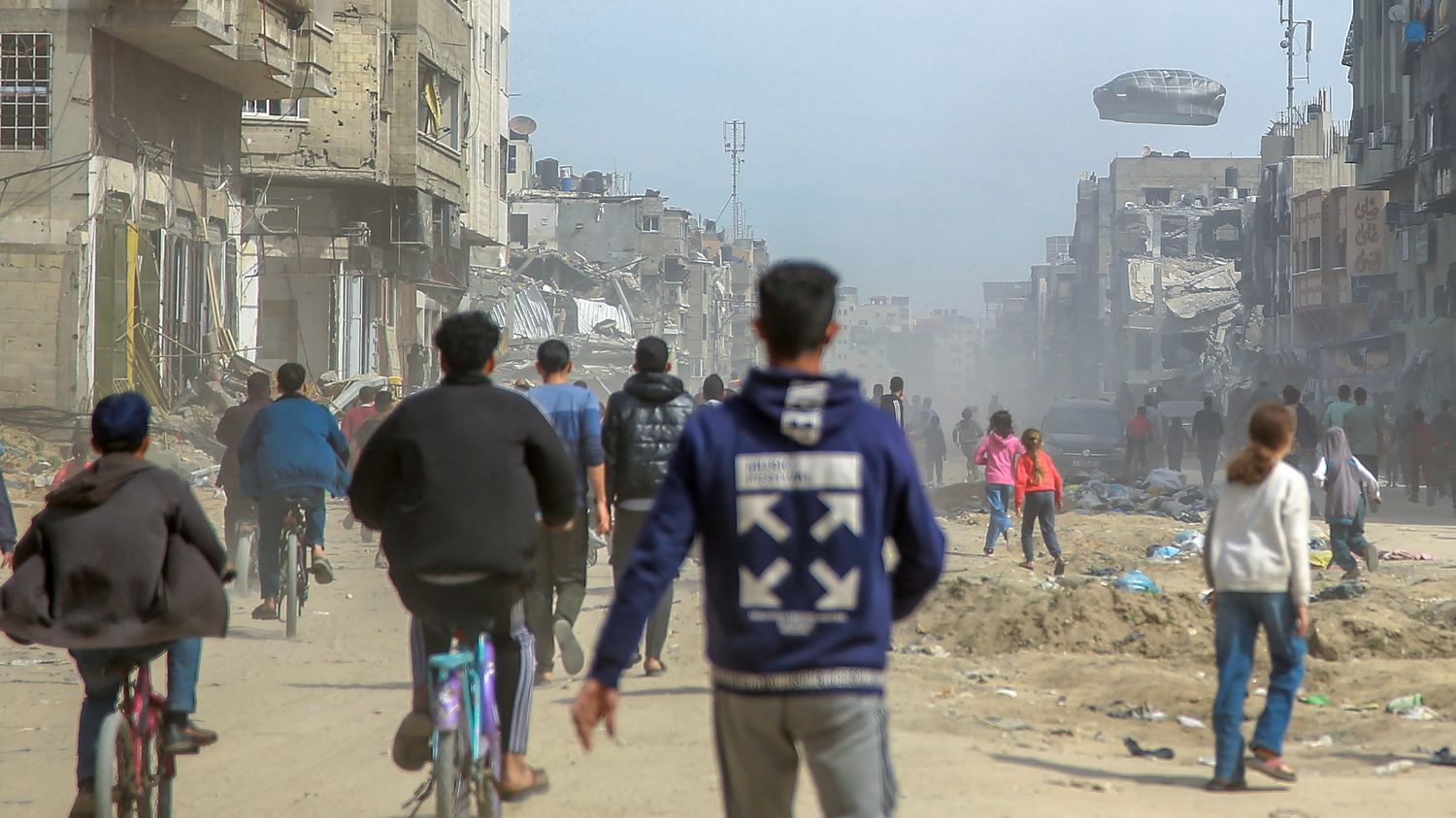At least 110 people died Thursday in Gaza, according to Hamas, during a distribution of humanitarian aid. The organization of this distribution was part of an experiment approved Monday by the Israeli war cabinet.

Published
Reading time: 3 min

On the one hand, we are talking about a “incident“, of a “dramatic stampede“: this is the Israeli version. On the other hand, a massacre, which now has a name in Gaza: “the massacre of the flour and the hungry”. Many questions arise the day after the death of at least 110 people in Gaza, according to Hamas, during a distribution of humanitarian aid on Thursday February 29.
Israel has recognized “limited shots“of Israeli soldiers who felt”threat“and also mentions”a stampede during which dozens of residents were killed and injured, some run over by aid trucks“. However, a new element is giving rise to a new controversy: this humanitarian convoy was organized by the Israeli army without consultation with the UN or local authorities. It is an experiment, a pilot project, approved by the Israeli war cabinet last Monday.
An experiment without consultation
The principle of this experiment is simple: once in Gaza, the trucks change drivers and local companies are then in charge of transporting aid to the North. They are escorted at night by the Israeli army, on well-defined routes, humanitarian corridors. The objective is to prevent the diversion of aid for the benefit of Hamas and above all to avoid looting.
Early Thursday morning, the convoy was made up of 38 trucks, driven by Palestinians and secured by the Israeli army. The spokesperson for the Israeli army indicated that this convoy, which entered Gaza from the Rafah crossing, on the Egyptian border, was chartered by “private companies“, without further details. He passed by the coastal road. It was the fifth since the implementation of this new system. The army specifies that the first four convoys crossed the area without incident.
Errors noted by the UN
The head of the UN Agency for Palestinian Refugees (UNRWA), Philippe Lazzarini, stressed on X (ex-Twitter) that “neither Unrwa nor any other UN agency was involved in this distribution“.
It was weeks that the UN humanitarian coordination in Jerusalem tried to negotiate with the Israeli army night crossings towards the north to avoid being stopped on the road by hungry residents or organized groups. “Night crossings were one of the suggestions that we put on the table because it was the only way to limit the number of people., explains Andrea De Domenico, the head of Ocha (Office for the Coordination of Humanitarian Affairs), the UN Office for the Coordination of Humanitarian Affairs. But “it was complicated, we did not have the guarantees of the dam opening at night” Then, “all of a sudden, they tried with the private sector. Except they didn’t take everything into account”he continues.
According to the images and testimonies collected by the UN services, there was an accumulation of errors on Thursday undoubtedly linked to inexperience on the ground. The drivers didn’t have the right reflexes and the convoy was too long, Andrea De Domenico believes: “The convoy tried to rush through the crowd and afterwards, once the trucks were stopped, the last part of the convoy was very close to the roadblock and that’s when there was shooting at the crowd because that they got too close to the dam.”
For months, the UN has complained about the restrictions imposed by the army on these convoys. The Israeli alternative solution leads to this catastrophe. The UN hopes to be able to return to the north, even if this affair further complicates things on the ground. For its part, the Israeli army says it is considering other methods of distributing humanitarian aid, by air, such as Jordan, or by opening a new entry point in Gaza.
